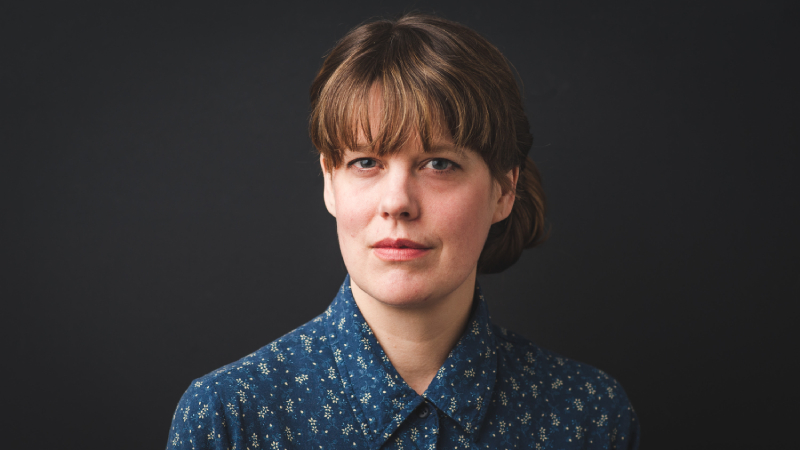Opening February 3, Richard Strauss’
Salome brings its timeless thrills to the COC stage for the first time since 2013! Under the direction of Atom Egoyan, the show fuses opera, theatre, dance, shadow puppetry and film into a mesmerizing visual spectacle, punctuated by Strauss’ groundbreaking score. Puppetry artist and interdisciplinary creator Clea Minaker returns to the show—a key creative talent first recruited by Egoyan after witnessing her shadow puppetry at a Feist concert—“I was excited by her work and loved what she was able to do with storytelling in a very childlike yet immediately identifiable way.”
We asked Clea about her
Salome reunion, the place of shadow puppetry in theatre, and what to expect from this year’s staging. Read on to hear from the artist herself!
Salome runs February 3 to 24. Get your tickets
here!
COC: Tell us about your experience returning to this show after nearly a decade!
Clea Minaker: Whenever a group of people come together on a project, whether the work is new, or a remount as it is now, it has to be brought to life all the same. There’s an act of creative engagement and collaboration that is absolutely necessary to build the scene and to put the production together.
I’m so excited to have those conversations again, to have them in a new way with the memory of what it was before, and what we want to say now. One significant change is that there is a new dance choreographer for the Dance of the Seven Veils, Julia Aplin, who was handed the baton by the original choreographer Serge Bennathan. She has brought new choreography to the scene, while re-interpreting the original dance. Together, we are ambitious to shape narrative elements of the scene in a new way.
COC: What excites you most about this year’s production? Minaker: Salome has been a controversial piece from the moment Oscar Wilde first penned it, each new staging acts as a barometer of its times. Atom is not afraid of making a bold statement with this opera, and his way of speaking about Salome’s relationship to her world has many different layers to it. With the Dance of the Seven Veils, it was his initial mise-en-scène (the scene’s design and arrangement) in 1996, to have Salome’s dance culminate with her assault by a group of men. This is a clear deviation from both the original play and opera. This choice leaves the audience to question their own voyeurism, and the position of objectification that Salome is placed in.
When we looked back on what we did a decade ago, it seemed obvious that such extreme sexual violence could no longer be staged in the same way. Since the #metoo movement, the collective discourse has shifted and there is an even greater responsibility, and opportunity, to address Salome’s subjectivity in this dance, wherein her “no” is undeniable, and her personal strength is seen.

COC: What does shadow puppetry bring to Salome?
Minaker: From the start, Atom had a really tactile presence in the multi-layered film projections that he and Phillip Barker had created for the production. There were analogue projectors, including PANI (large-image) projectors with gigantic glass slides, that were eventually digitized in the 2013 version. The shadow puppetry inscribes itself neatly into this universe. I was able to bring the various techniques of this art-form into play, which involves the ability to frame the image, to expand, to layer, or to distort it. In this dance, the shadows combine metaphor, poetics, and the beauty of human movement, at a scale that is larger than life.
In his text
In Praise of Shadows, designer and visual artist William Kentridge states “the world of shadows tells us things about seeing that are invisible by the light of the sun.” Shadows are a kind of direct form of communication, as we go from light into darkness, the contours can reveal a deeper, more universal truth. Shadows both depart from reality and tell us about reality.
I think the way shadow puppetry is now used in the Dance of the Seven Veils makes a terrific impact in the scene.
COC: To finish off, let’s talk about that scene in particular! Minaker: Dropping the curtain on Salome’s dance separates the viewer, theoretically, from the possibility of objectifying her, offering an aesthetic filter, revealing truths through what you can and can not see. As the film projections lead us deep into the forest, and far away from the world of Herod’s court, the culmination of the dance, an act of abhorrent sexual violence, reminds of her position as a woman in her world, and the ways in which she has been mythologized, or despised, throughout our patriarchal past.
In Atom’s mise-en-scène, Salome’s family world is a drug-fuelled, licentious place—this positions her in an in-between space between childhood and adulthood. She’s being offered substances and feels lost, her world is not a safe place, as is expressed through the image of a young girl walking blindfolded through the forest.
Putting the dance in the shadow world brings us to multiple places at once: we are in Salome’s heart and soul, in the beauty and the power of her dance, and in the intensity of her struggle. We leave the concrete reality of the opera to experience things from a very non-literal place, that is at the same time, entirely embodied.
Opening Friday, February 3, 2023, Richard Strauss’
Salome runs February 5, 9, 11, 17, 19, and 24.
Tickets are now on sale!
Header photo: Alex Tran
Salome photo: Michael Cooper


